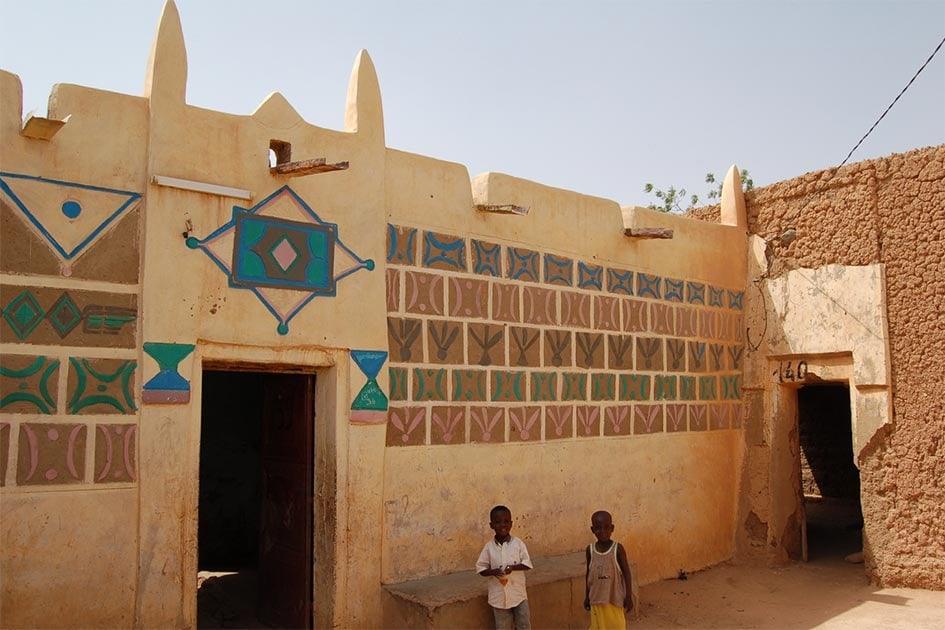Zinder Old Town, Celebrated Cultural Capital of Niger
The history of the Sahel in Africa is a rich and exciting one. Many remains of great empires and cultures have been found in the region, but one of the most remarkable sites is the old town of Zinder in Niger. Here visitors can get a real sense of traditional society and watch the local craftsmen ply their trade in much the same way that their forefathers had done for generations.
The History of Zinder Old Town
From the 15 th century, a number of Hausa kingdoms were created in the area between the River Niger and Lake Chad. The Hausa became Muslims and were great traders and artisans. Zinder, originally a small Hausa village, was captured by Kanuri aristocrats who created the Damagaram state, initially a dependency of the Kanem-Bornu Empire.

Location of Zinder, Niger (Google Maps)
Damagaram soon expanded by conquering Bornu states. Zinder became the capital of the empire and grew into a large city under the patronage of the Kanuri elite. The city flourished because it was on an important trade route and trade with both Muslim and non-Muslim states was encouraged. Many Tuaregs and others settled in Zinder where there were quarters for these groups. Most of the Hausa population lived in the old town of Zinder.
By the mid-1800, the city was the capital of a territory that measured about 70,000 square miles. By 1890 the French had expanded into modern Niger from their base in Senegal. A French army, of mainly colonial troops, defeated the Sultan of the Damagaram Empire in a battle 7 miles (10km) outside Zinder. The city and its adjacent territory were largely neglected by the French and the Sultan continued to have a large degree of autonomy.
Zinder was the capital of French Niger until 1927, when Niamey became the capital, although it is still considered to be its cultural center.
Visiting the Old Town of Zinder
Today the modern town of Zinder is the second city of Niger. The old city is located near the center of the modern town and some of the old walls that once encircled Zinder can still be seen. It was built in a circular layout and consists of narrow streets and alleys. Many traditional houses, built of adobe brick and typically one story high, remain. These traditional houses are decorated with ornate images and designs, often of a geometric pattern, and they are shaded by trees.
- The Ancient Tuaregs, Lost Lords of the Sahara
- The Prosperity and Power of the Ghana Empire Flourished on the Trans-Saharan Trade Route
- The Monumental Tomb of Queen Tin Hinan, Ancient Ancestress of the Tuaregs

Exterior view to Grand Mosque of Zinder in Niger (homocosmicos/ Adobe Stock)
There are several madrasahs in the old town, where students study the Koran. The beautifully colored mosque is kept company by markets that sell traditional arts and crafts, not only to tourists. These authentic markets have been trading for centuries.
The ruling Sultan, who is an important figurehead for the local region, resides in a striking palace in the old town of Zinder. He hosts many ceremonies and the ancient traditions of African monarchies are still very much alive. The palace is a huge adobe building and it consists of many narrow passageways and halls.

Exterior view to Damagaram sultan residence, Zinder, Niger (homocosmicos/ Adobe Stock)
The main entrance is in a traditional Hausa style and the windows are covered by casements. There are many ornate motifs and decorations on the walls made of painted wood. The palace is guarded by security officials who wear traditional red robes and much of the complex is out of bounds, but admission to the public areas can be gained for a fee.
How to Get to Zinder Old Town
Zinder has a small airport, although it is also possible to hire a bush cab from nearby Nigeria or the capital city of Niger. Taking a bus may be the best way to get to Zinder old town, but there is little tourist accommodation. Niger is a predominately Muslim country and it is advised to respect the customs of the local people.
Top image: Zinder old town Source: CC BY 2.0
By Ed Whelan
References
Dilley, R. (2014). The Mallam and the Qadis: A Posting to Zinder, 1900–1903. In Nearly Native, Barely Civilized (pp. 155-208).
Available at: https://brill.com/view/book/9789004265288/B9789004265288-s009.xml
Fuglestad, F. (1978). A reconsideration of Hausa history before the Jihad. The Journal of African History, 19(3), 319-339
Mann, G. (2015). From Empires to NGOs in the West African Sahel (Vol. 129). Cambridge University Press

















